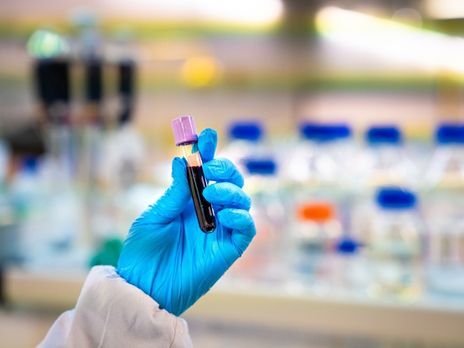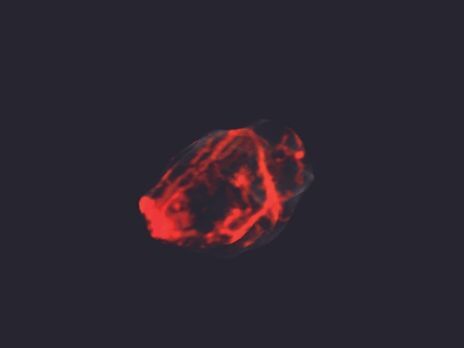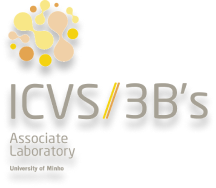
WNTrack – Tracking brain tumors through their exosomes: a WNT6-driven approach
Brain tumors have one of the highest mortality rates and rank 1st in average years of life lost among all tumor types. Among them, glioblastoma (GBM)…

Céline S. Gonçalves (CG) is a Biochemist, with a PhD in Health Sciences (2018), and a thesis on brain tumors pathophysiology. Since 2022, she is a Junior Postdoctoral Researcher at ICVS, having been granted a competitive FCT-funded position to investigate new strategies for brain tumors theranostics. Recently, she secured funding to investigate novel strategies to track brain tumors through their exosomal signature.
In the last years, as first author, she contributed with the first description of WNT6 oncogenic and prognostic roles in glioblastoma (GBM), proving that its silencing significantly prolongs survival of GBM mice models, and establishing it as a new therapeutic target (Theranostic 2018). She has identified HOTAIR as a prognostic factor in GBM (Oncotarget 2018), and established HOXA9 and DNA methylation as WNT6 and HOTAIR upstream regulatory mechanisms (Mol Oncol 2020), with implications for GBM patients’ stratification and management. Her recent works expand more globally to the relevance of HOX genes and CSCs in GBM (CMLS 2020 and IJMS 2020). To answer these scientific questions, she profits from broad experience in molecular/cellular biology, and (bio)informatics, using a wide panoply of biological samples, from preclinical in vitro/in vivo models to patient-derived samples.
Besides her work in brain tumors, and mainly due to her fluency in big data analyses and expertise in mice cancer models, she has been involved in projects targeting other tumor types, like breast, prostate, kidney, bladder, lung, and mesothelioma.
Since 2019, she is also member of the Animal Welfare and Ethics Body from EM/ICVS-I3Bs/3Bs.

Céline S. Gonçalves (CG) is a Biochemist, with a PhD in Health Sciences (2018), and a thesis on brain tumors pathophysiology. Since 2022, she is a Junior Postdoctoral Researcher at ICVS, having been granted a competitive FCT-funded position to investigate new strategies for brain tumors theranostics. Recently, she secured funding to investigate novel strategies to track brain tumors through their exosomal signature.
In the last years, as first author, she contributed with the first description of WNT6 oncogenic and prognostic roles in glioblastoma (GBM), proving that its silencing significantly prolongs survival of GBM mice models, and establishing it as a new therapeutic target (Theranostic 2018). She has identified HOTAIR as a prognostic factor in GBM (Oncotarget 2018), and established HOXA9 and DNA methylation as WNT6 and HOTAIR upstream regulatory mechanisms (Mol Oncol 2020), with implications for GBM patients’ stratification and management. Her recent works expand more globally to the relevance of HOX genes and CSCs in GBM (CMLS 2020 and IJMS 2020). To answer these scientific questions, she profits from broad experience in molecular/cellular biology, and (bio)informatics, using a wide panoply of biological samples, from preclinical in vitro/in vivo models to patient-derived samples.
Besides her work in brain tumors, and mainly due to her fluency in big data analyses and expertise in mice cancer models, she has been involved in projects targeting other tumor types, like breast, prostate, kidney, bladder, lung, and mesothelioma.
Since 2019, she is also member of the Animal Welfare and Ethics Body from EM/ICVS-I3Bs/3Bs.
REPRESENTATIVE PEER-REVIEWED PUBLICATIONS:
• Céline S. Gonçalves*, Ana Xavier-Magalhães*, Tatiana Lourenço, Marta Pojo, Miguel Rocha, Maria Celeste Lopes, Inês Crespo, Olinda Rebelo, Herminio Tão, João Lima, Ricardo Moreira, Afonso A. Pinto, Chris Jones, Rui M. Reis, Joseph F. Costello, Nuno Sousa, Bruno M. Costa. “The long non-coding RNA HOTAIR is transcriptionally activated by HOXA9 and is an independent prognostic marker in patients with malignant glioma”, Oncotarget, 2018; 9(21): 15740-15756. *These authors contributed equally to this work.
• Céline S. Gonçalves, Joana Vieira de Castro, Marta Pojo, Eduarda P. Martins, Sandro Queirós, Emmanuel Chautard, Ricardo Taipa, Manuel Melo Pires, Afonso A. Pinto, Fernando Pardal, Carlos Custódia, Cláudia C. Faria, Carlos Clara, Rui M. Reis, Nuno Sousa, and Bruno M. Costa “WNT6 is a Novel Oncogenic Prognostic Biomarker in Human Glioblastoma”, Theranostics, 2018; 8(17): 4805-4823.
• Céline S Gonçalves, Ana Xavier-Magalhães, Eduarda P Martins, Afonso A Pinto, Manuel Melo Pires, Célia Pinheiro, Rui M Reis, Nuno Sousa, and Bruno M Costa “A novel molecular link between HOXA9 and WNT6 in glioblastoma identifies a subgroup of patients with particular poor prognosis”, Molecular Oncology, 2020; 10.
• Céline S. Gonçalves, Elisa Le Boiteux, Philippe Arnaud, Bruno M. Costa “HOX gene cluster (de)regulation in brain: from neurodevelopment to malignant glial tumours”, Cellular and Molecular Life Sciences, 2020; 77(19): 3797-3821.
• Gonçalo Outeiro-Pinho*, Daniela Barros-Silva*, Elena Aznar, Ana-Isabel Sousa, Márcia Vieira-Coimbra, Jorge Oliveira, Céline S. Gonçalves, Bruno M. Costa, Kerstin Junker, Rui Henrique, and Carmen Jerónimo (*contributed equally) “MicroRNA-30a-5pme: a novel diagnostic and prognostic biomarker for clear cell renal cell carcinoma in tissue and urine samples”, Journal of Experimental and Clinical Cancer Research, 2020; 39(1): 98.
• Céline S. Gonçalves*, Joana Vieira de Castro*, Adília Hormigo, and Bruno M. Costa “Exploiting the complexities of glioblastoma stem cells: insights for cancer initiation and therapeutic targeting”, International Journal of Molecular Sciences, 2020; 21(15): 5278. *These authors contributed equally to this work.
• Joana Vieira de Castro, Céline S. Gonçalves, Eduarda P. Martins, Irene Miranda-Lorenzo, Mariana T. Cerqueira, Adhemar Longatto-Filho, Afonso A. Pinto, Rui L. Reis, Nuno Sousa, Christopher Heeschen, and Bruno M. Costa “Intracellular autofluorescence as a new biomarker to identify Glioblastoma Stem Cells”, Cancers, 2021; 13(4): 828.
• Eduarda P. Martins, Céline S. Gonçalves, Marta Pojo, Rita Carvalho, Ana S. Ribeiro, Vera Miranda-Gonçalves, Ricardo Taipa, Fernando Pardal, Afonso A. Pinto, Carlos Custódia, Cláudia C. Faria, Fátima Baltazar, Nuno Sousa, Joana Paredes, and Bruno M. Costa “CDH3/P-cadherin is a novel oncogenic biomarker with prognostic value in glioblastoma”, Molecular Oncology, 2020; in press.
PATENTS:
• Céline S. Gonçalves, Nuno Sousa, Bruno M. Costa (2019). A novel oncogene biomarker, methods and uses thereof. International patent no. WO2019207512A2
PRIZES AND AWARDS:
• CG has been the recipient of 5 best poster (2 as first author), 3 best oral presentations (2 as first author), and 3 travel grants awards.

Brain tumors have one of the highest mortality rates and rank 1st in average years of life lost among all tumor types. Among them, glioblastoma (GBM)…

Of all brain tumors, glioblastoma (GBM) is particularly devastating, being the most common and most malignant type. Using a wide panoply of biological samples, ranging from…

Glioblastoma (GBM) is a notoriously devastating malignant brain tumor, presenting remarkable intratumor heterogeneity. Despite aggressive treatments, it is universally fatal, with a median patient survival of…

Gliomas, the most common primary brain tumors, arise from the glial cells and typically exhibit bad prognosis. In particular, glioblastoma (GBM), the most common and aggressive…



Phone: +351 253 604 967
Fax: +351 253 604 809
Email: icvs.sec@med.uminho.pt
Life and Health Sciences
Research Institute (ICVS)
School of Medicine,
University of Minho,
Campus de Gualtar
4710-057 Braga
Portugal

Copyright ©2022 ICVS. All Rights Reserved



Copyright ©2022 ICVS. All Rights Reserved
Life and Health Sciences
Research Institute (ICVS)
School of Medicine,
University of Minho,
Campus de Gualtar
4710-057 Braga
Portugal



Copyright ©2022 ICVS. All Rights Reserved
Life and Health Sciences
Research Institute (ICVS)
School of Medicine,
University of Minho,
Campus de Gualtar
4710-057 Braga
Portugal

